Social and economic development. Рубрика в журнале - Economic and Social Changes: Facts, Trends, Forecast
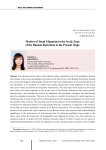
Motives of youth migration to the Arctic zone of the Russian Federation at the present stage
Статья научная
The relevance of the study is that migration plays a significant role in the population decline and changes in the socio-demographic structures of the Arctic zone of the Russian Federation. Taking into account the negative demographic trends that hinder real opportunities to natural reproduction of the population, it is necessary to consider the existing potential for youth migration to the Arctic zone and to study the motives for migration substantively. The main idea of the study lies in the fact that motives for youth migration to the Arctic zone of the Russian Federation have place-specific characteristics, and studying the motives for migration will potentially strengthen the motivational tools for population attraction. The aim of the work is to identify the motives for youth migration to the Russian Arctic in the context of the relationship between the meaning of migration for a person and the specifics of the territory. The scientific novelty of the study lies in the identification of the features of motives for migration behavior of young people who have experience of migration to the Russian Arctic from non-Arctic constituent entities of the Russian Federation. The revealed and substantiated features of the motives for youth migration to the Russian Arctic have practical and epistemological significance in the development of motivational tools for attracting qualified young people to the Arctic zone within the framework of demographic and employment policy. The main methods are statistical analysis, in-depth interview method, thematic analysis. Further research can be aimed at specifying and detailing the motives for migration in terms of gender aspect; features of return skilled migration of young people who left the Arctic zone of the Russian Federation to receive education; and supplemented by expert interviews on the problems of organizing the system of attracting qualified personnel from non-Arctic territories to the region.
Бесплатно
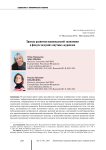
National economy development trends highlighted by leading scholarly journals
Статья научная
Currently, the Russian academic community faces an important task of providing information support to the scientific and technological development of the national economy, aimed, among other things, at minimizing the consequences of increasing information isolation, which is changing the established publishing patterns and destroying the working models of scientific journals. The hypothesis of our research is that journals, which are at the stage of the life cycle characterized by a continuous increase in publication citation, possess scientific maturity enabling them to integrate basic trends in the development of the national economy. Therefore, the aim of our study is to design a theoretical and methodological approach to identifying basic trends in the development of the national economy through content analysis of a pool of leading Russian journals of international level that are at the stage of scientific maturity. Methodological base includes a set of approaches to life cycle modeling: scientific school, scientific research, scientific data, scientific publication, scientific citation and other elements of scientific activity adapted to the specifics of periodicals’ functioning. To confirm the hypothesis and achieve the goal, the indicator “journal’s scientific maturity index” has been developed, the structural elements of which are two-year impact factors, five-year impact factors, number of article views per year, number of article downloads per year, probability of citation after reading. Methodological support for modeling is carried out with the use of assessment tools that allow determining the vector of comprehensive development of the journal by citation indicators. The methodological approach to life cycle modeling that we developed has been tested on the example of such journals as Vestnik MGIMO-Universiteta; Vestnik mezhdunarodnykh organizatsii: obrazovanie, nauka, novaya ekonomika; Zhurnal novoi ekonomicheskoi assotsiatsii; Mirovaya ekonomika i mezhdunarodnye otnosheniya; Sovremennaya Evropa; Voprosy ekonomiki; Forsait; Ekonomicheskaya politika; Ekonomika regiona; Ekonomicheskie i sotsial’nye peremeny: fakty, tendentsii, prognoz. As a result, we have found that academic journals which possess scientific maturity integrate ideas that can become the determinant of new directions for national economic development. The findings will be useful to the authorities involved in designing basic trends in the development of the national economy.
Бесплатно
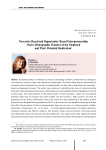
Статья научная
Entrepreneurship is considered as a source of increasing economic competitiveness, emergence of innovations, creation of jobs, and realization of public goals. The article shows that the achievement of economic goals is associated not only with entrepreneurship, but also with its individual types (necessitybased and opportunity-based). The author pays attention to identifying the types of entrepreneurship (necessity-based and opportunity-based), determining socio-demographic features of population involved in these types, how representatives of the selected types of work perception, realize the accumulated potential, what type of earnings they prefer (stable, but low incomes / high incomes, but with no guarantees for the future). Information data of the research is data monitoring of the quality of labor potential of the Vologda Oblast population for 2020. In the course, the work identifies the groups of factors that affect the prevalence of these entrepreneurship types (in one case, it is macroeconomic stability, institutions, infrastructure, etc., in the other - for technological improvement, for higher education, vocational training, and efficient markets). The research reveals common features of necessity-based and opportunity-based entrepreneurs and their differences. The author proves that opportunity-based entrepreneurs perceive their activities to a greater extent from the position of focusing on earning respect and recognition, gaining new knowledge, and realizing their potential. They are more likely to rate their prospects for professional development, career growth and professional improvement higher than other groups of entrepreneurs. The practical significance of the study is to identify groups of opportunitybased and necessity-based entrepreneurs, characteristics peculiar to each of them, and to highlight their common and different features. In turn, the latter creates prerequisites for the authorities in terms of creating conditions for each of the groups of entrepreneurs, determining the most effective and successful incentives for activating their potential.
Бесплатно
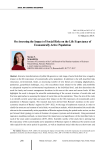
On assessing the impact of social risks on the life expectancy of economically active population
Статья научная
Intensive transformations of public life generate a wide range of social risks that have a negative impact on the life expectancy of economically active population. In addition to the well-described risks (insurance, environmental, food), an increasing number of new threats are emerging (digitalization, pandemics, geopolitical challenges, etc.); this exacerbates issues related to the ability and possibility to adequately respond to environmental requirements at the individual level, and also determines the need for timely and correct management decisions in this area at the meso and macro levels. All this highlights the need to deepen the scientific understanding of the current structure of social risks and find new approaches to assessing the impact of social risks on the population. Thus, the aim of the study is to identify current social risks and assess their impact on the life expectancy of economically active population in Russian regions. The research data were derived from Rosstat’s statistics on the socio-economic situation of Russia’s regions for 2019-2022. At the stage of exploratory research, in order to clarify the structure and content of social risks, we used factor analysis, which determined the social risks relevant to the economically active population of Russian regions during the period under review; we also put forward their typology in terms of duration of exposure (systems and situational). Using automated regression modeling methods, we determined the importance and significance of the identified risks in each of the years under consideration (2019-2022). Scientific novelty of the study lies in proving that life expectancy of the economically active population of Russian regions is influenced by systems social risks typical for the entire period in question, as well as situational social risks that are short-term and that arise during the crisis. It is proved that the results obtained help to apply a differentiated approach to the implementation of measures to increase life expectancy - through long-term strategic programs to reduce the impact of systems social risks or targeted short-term solutions of a predominantly economic nature to overcome the negative impact of situational social risks, which can contribute to improving the effectiveness of governmental and regional social policy
Бесплатно
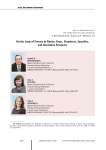
On the issue of poverty in Russia: facts, paradoxes, specifics, and alleviation prospects
Статья научная
The relevance of the research topic is determined by the need to reduce poverty in Russia to improve the quality of human capital in order to ensure long-term and sustainable growth of its economy. The paradox of the current welfare system in the country has been established: a significant excess of the real poverty rate compared to its maximum permissible value against the background of high indicators of total national wealth and economic potential of the country. The aim of the study is to theoretically substantiate the failure of Russia’s transition in 2021 to a new methodology for determining the national poverty line; to statistically test the hypothesis of high regional income inequality as one of the main features of Russian poverty, limiting the possible rates of economic growth; to formulate the minimum necessary tools of state policy to promote poverty reduction in the country. The research methodology is based on the system approach; on the application of methods of correlation, regression, cluster analysis of data (including the method of k-means and hierarchical clustering), methods of classification, comparison, contrast and time series analysis. The models were identified by means of analysis of variance, testing of statistical hypotheses about the reliability of models and the significance of their parameters, coefficient of determination. In the context of the concepts of “social state” and “sustainable development” the inappropriateness of Russia’s rejection of the normative approach to the definition of the national poverty line in favor of only a relative approach (44.2% of Me) was substantiated. Regression dependencies between the poverty rate and per capita GRP (taking into account its structural components) were constructed for Russia’s constituent entities; four clusters were formed on the basis of such dependencies, within which direct and inverse relationships of different strength between the poverty rate and structural components of per capita GRP were identified. The minimum necessary toolkit of state policy to promote poverty reduction in Russia, taking into account the existing capabilities of its economy, was formed.
Бесплатно
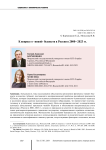
On the issue of “new” poverty in Russia in 2000-2023
Статья научная
The research topic is relevant because the phenomenon of “new” poverty has been recognized as Russia’s deep and lingering problem of the 21st century, which is accompanied by underutilization of accumulated human capital and an increased risk of a decline in the economic value of education, which hinders progressive and sustainable economic growth. The aim of the work is to concretize key qualitative features of “new” poverty and substantiate the reproduction of this phenomenon in Russia in 2000- 2023, which is driven by rent-oriented behavior of the state and extreme socio-economic inequality. The methodology of the study is based on a systems approach, analysis using linear and separation methods in relation to identification, and analysis of causes, concomitant factors and consequences; we also use hierarchical classification of variables for clustering Russia’s constituent entities taking into account the spread of the phenomenon of absolute monetary poverty. We identify a fundamental condition, main causes determined by extreme socio-economic inequality, and their accompanying factors, which together explain the reproduction of “new” poverty in Russia as a major problem requiring solution at the political level. W consider key qualitative signs of “new” poverty in Russia, revealing its nature in the conditions of rent-oriented behavior of the state. They include social exclusion from the use of resources, various benefits and privileges; coverage of employees with secondary and higher professional education working in different economic sectors, downward professional and qualification mobility; expansion of the “shadow economy of survival”, etc. We conduct the clustering of Russia’s constituent entities, taking into account the spread of absolute monetary poverty in 2023. We propose some basic and fundamental measures aimed at overcoming poverty (taking into account its “new” quality) and raising Russians’ incomes.
Бесплатно
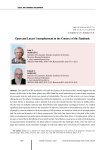
Open and Latent Unemployment in the Context of the Pandemic
Статья научная
The specifics of the pandemic crisis and the features of the Russian labor model suggest that the impact of this crisis on the labor sphere may differ from the usual implications of crisis-driven recessions in economic activity, and create new points of vulnerability. The aim of this article is to trace changes taking place in the sphere of employment during the pandemic, to reveal how unemployment, including its latent forms, is spreading, and to identify risk areas that should become the focus of public policy. On the basis of available statistics data from Rosstat and independent sociological surveys, we explain significant discrepancies between the dynamics of objective indicators of unemployment and the extent of people’s concerns related to their perception of this problem; we assess the structure of unemployment and the scale and dynamics of its latent component. The study has shown that at the peak of the crisis, latent unemployment exceeded open unemployment by more than three times. Unemployment, either in an open or latent form, has affected every fourth worker. Nevertheless, in general, in terms of the dynamics of macroeconomic proportions, the labor sphere is coping with the challenges of the crisis: the sector of large and medium-sized enterprises managed to maintain almost pre-crisis levels of employment, open unemployment remained within socially acceptable limits, a dangerous surge in latent unemployment was overcome by the beginning of the third quarter of 2020. At the same time, serious shifts have taken place in the usual structure of redundancies: highly qualified and educated workers employed in key sectors of intangible production, who felt confident in the labor market and got used to the stability of their socioeconomic situation, have been considerably affected. Geographically, the crisis has had the most serious impact on large cities with a significant amount of middle class population. This aggravated the acuteness of people’s perceptions of the crisis and jeopardized the preservation and reproduction of elite segments of national human potential.
Бесплатно
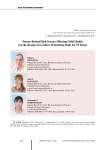
Статья научная
The economic significance of the problem of preserving and strengthening the health of shrinking child population as an important component of reproductive, labor and human potential requires the search for and development of mechanisms to manage risk factors. We present sample results of a multi-year monitoring study of child health in the Vologda Oblast for 25 years of research (1998- 2022). The purpose of our research is to evaluate the degree of risk to the health of preschool children caused by certain factors on the part of parents. The research methodology is the intracohort method of data analysis on 1,454 children from five cohorts (1998, 2001, 2004, 2014 and 2020 years of birth) by calculating the relative risk index. The scientific novelty is a comparative analysis of the influence of age, health and hazardous working conditions of future parents on the child health in the pre- and postnatal period. We have found that young maternal age is often a risk factor for child health, while mature maternal age increases the risk of cesarean section and delayed neuropsychological development in children by the age of 7. In contrast, father’s young age acts as a protective factor during intrauterine child development, but increases the risk of disease development in the future. Mature father’s age creates risks of congenital abnormalities of the cardiovascular system, but its negative effect is mitigated later on. We assume that the reason for this lies in the higher level of material wealth, medical literacy, and responsibility of aging parents. Parents’ hazardous working conditions have a deleterious effect on the child health after birth, and on the maternal health in the prenatal period as well. A complicated obstetric history of previous and current pregnancies is the most significant risk factor on the maternal part. Her chronic diseases showed no association with abnormalities in the child health, the exceptions are obesity and thyroid dysfunction. In contrast, father’s complicated obstetric history demonstrates a strong association with intrauterine fetal development disorders, the use of surgical childbirth, congenital abnormalities, the low Apgar score for the newborn, and child’s disease in the future. Practical significance of the work lies in emphasizing father’s role in the formation of child health and preparing recommendations for the prevention of child health disorders taking into account the data on the risk factors of both parents.
Бесплатно
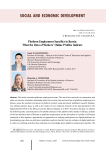
Platform employment specifics in Russia: what the data of workers’ online profiles indicate
Статья научная
The article discusses platform employment issues and aims to systematize and provide an overview of current knowledge about the state and structure of platform employment in Russia. It also aims to assess the position and status of platform workers based on previously published research, new official statistical data, and the results of our own empirical research using data from the digital platform Profi.ru for Moscow and the Moscow region as of 2023. To achieve this goal, the following tasks were addressed: systematizing available estimates of the platform labor market in Russia, analyzing the primary statistical data from Rosstat on platform employment, and creating a profile of a typical Russian employed person in this segment. Approaches to studying employment on digital platforms were also tested by downloading open data on platform workers directly from the platforms' websites in order to enrich statistical data and gain a better understanding of platform employment specifics. We conclude that the platform employment structure is institutionalized within social practices and is gradually approaching the general employment structure in terms of basic socio-demographic characteristics. However, it still has its own unique features. For example, the average age of platform workers is lower than that of the overall employed population. Platform workers are predominantly male and urban residents. At the same time, platforms, particularly those providing physical services on a local level, are characterized by a predominance of traditionally vulnerable groups in the labor market, such as women aged 20-29 and 3039 with young children, students, and young people without work experience. Migrants and individuals without professional qualifications are also overrepresented among platform workers. Data from the Profi. ru website indicates that these workers are mainly employed in the informal economy. More than 10% of the profiles on the platform in question are "false", that is, they belong to organizations, teams, or groups of performers (formal or informal) rather than individuals.
Бесплатно
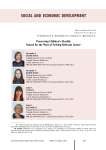
Preserving children's health: search for the ways of solving relevant issues
Статья научная
Changed social reality, caused by the coronavirus pandemic (COVID-19), made attention to population’s health, its risks, and defining factors relevant. Nowadays, an individual’s personal responsibility for own health and coherence of various social institutions’ activities in the formation of children’s health are of particular importance. The article is devoted to an analysis of children’s health and search for the ways of its improvement. The authors explore the issues of availability and quality of medical services, safeguard of children’s health and discuss the barriers to inter-institutional cooperation in this field, as well as ways of overcoming them. To achieve these objectives, we used quantitative and qualitative sociological methods: a sociological survey of families with children aged 3-17 years, monitoring observation of cohorts of families with children, focus group studies of parents of children aged 3-17 years, an expert survey of specialists of the regional health system and members of government authorities. The authors reveal several issues: decline of children’s health potential in growing; insufficient awareness of parents about the state, forms, and methods of preserving and strengthening children’s health, discrepancy between parents’ ideas about their own competence in this matter with reality; lack of narrow-profile specialists in children’s medical institutions; absence of medical workers among full-time staff of educational organizations; queues and complexity of making appointments with specialists; low availability of free and high cost of paid medical services; insufficient information interaction between medical, educational organizations and parents in the prevention of diseases; lack of parents’ knowledge of full information about objectives of professional examinations and insufficient awareness of the importance of further actions to restore and strengthen health of children. Based on the analysis, we stated the areas of solving these problems. They may include the development and implementation of specific management tools to preserve children’s health potential.
Бесплатно
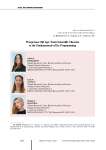
Prosperous old age: from scientific theories to the fundamentals of its programming
Статья научная
In most countries, due to changes in the age structure of their population caused by the global process of demographic aging, discussions have been held for many decades about the essence of the aging process itself and the mechanisms of adaptation of society to the ongoing changes. The multidimensional nature and complexity of aging, in which biological, age-related, socio-cultural, economic and psychophysiological transformations are intertwined, are repeatedly emphasized. A universal understanding of aging cannot be developed, but each country needs its own aging concept in order to provide for a full-fledged and decent life of older adults. The aim of the study is to generalize conceptual approaches to understanding aging and systematize its factors; this will allow us to conceptualize prosperous old age as a basis for effective public policy in the field of aging. Theoretical basis of the study includes foreign and Russian works on demographic aging. We elaborate on the conceptual framework used in the research and on the relations between key categories; generalize relevant aging concepts and highlight a theoretical basis for our approach; systematize factors contributing to the process of successful aging; provide our own view of the term “prosperous old age” and the conceptual framework of governmental policy on its basis. Scientific novelty of the research consists in the fact that we elaborate on the concept of prosperous old age and substantiate ways to formalize it in modern institutions and tools of social policy. The results obtained can provide a theoretical basis and contribute to the further development of Russian research on successful aging.
Бесплатно

Public health potential: current state and relation to Russian regions’ features
Статья научная
The article investigates issues related to public health and its potential in the context of modern challenges. Understanding health potential as a complex concept is based on the interrelation of various aspects of health (physical, emotional, moral, social) and well-being of an individual in various spheres of life. The aim of the work is to analyze public health potential in various regions of the Russian Federation based on individuals’ self-reported health data and the current socio-economic situation in the region. The study is based on the Selective Observation of the State of Public Health Survey conducted by Rosstat in 2019-2022, covering more than 100 thousand people. Additionally, statistical data on the socio-economic situation in the regions were taken into consideration. The analysis methods include hierarchical cluster analysis to classify regions according to the level of self-rated health using Ward’s method to determine the proximity of clusters. The study revealed two main types of health potential preservation in Russian regions. The first type is associated with a good environmental situation in the regions alongside a wide spread of rural areas and the maintenance of a tradition of health care, the second type is due to the high level of socio-economic development in the region, an effective health care system and a high level of citizens’ education. The age structure of the population turns out to be an important factor influencing self-reported health. The analysis of demographic indicators reveals that regions with high health potential have younger population. The metropolitan regions are distinguished by a high level of socio-economic development and education, which is reflected in the highest indicators of public health. The comparison of more attractive groups of regions in terms of health potential with regions characterized by low health potential shows that low living standards, poverty and high mortality of the working-age population have a negative impact on self-reported health and overall health potential. Health potential is an important indicator of the quality of life; and attention to the factors influencing its formation will allow identifying resources to improve public health and prevent negative trends in the socio-economic and demographic development of the region.
Бесплатно
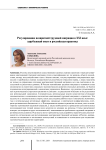
Regulating return labor migration in the 21st century: foreign experience and Russian practice
Статья научная
The article analyzes current practices and measures of regulating commuting in different countries by classifying them according to the level, object of impact, actor, type of impact and purpose. The analysis shows that the regulation of migration processes in foreign countries is carried out by various branches of law, and measures are aimed not only at managing the flows of commuting, but also at mitigating its consequences at various levels. In Russia in general, commuting is mentioned in the strategies of socioeconomic development of individual regions without being fully integrated into management mechanisms. We reveal that its mentioning in regional development strategies does not take into consideration its actual volumes and implications for the regional economy. Thus, regional authorities do not sufficiently take into account economic and social consequences of commuting in their strategies. This also applies to its positive aspects, such as job creation and economic recovery, as well as potential negative effects associated with infrastructure overload, regional budget losses, etc. The importance of developing a system for monitoring commuting is emphasized, as well as the need for additional research to assess all aspects of its impact on the regions. The article is of interest to a wide range of researchers studying labor migration and regional development. The results can be used to develop practical recommendations for optimizing measures to regulate commuting in Russia, aimed at reducing its negative consequences and enhancing its potential for socio-economic development of territories.
Бесплатно
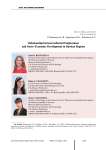
Relationship between informal employment and socio-economic development in Russian regions
Статья научная
The relevance of the study is due to the prevalence and long-lasting nature of informal employment practices among the Russian population, as well as the ambiguity of their social and economic implications. The article presents the results of a multidimensional statistical analysis of socio-economic processes in the regions of Russia for 2018 and 2020. The empirical base includes a system of indicators we formed according to Rosstat data. More than 100 variables characterizing the state of the regions have been tested: macroeconomic conditions, labor market, standard of living and quality of life, human capital, and demographic development. According to the calculated factor models for 2018 and 2020, two key components are identified, which we interpret as integral indicators characterizing the intensity of various manifestations of unemployment and informal employment in Russian regions. Further, on the basis of correlation analysis, we show the nature of the interrelationships of the integral indicator (factor) “informal employment” with key macro indicators of regional development. There is a close relationship between informal employment and indicators of economic growth, investment, consumption and income levels, and the lack of connection with indicators of the social sphere. We also classify regions according to indicators of informal employment and analyze the (non)stability of the composition of groups over time and their relationship with the dynamics of regions’ socio-economic development. The novelty of the study consists in an attempt to find hidden patterns and features of manifestation of informal employment in regions and assess their stability over time. The value of the results obtained lies in clarifying the nature of the interrelationships between the specifics of socio-economic development of territories and informal employment models; and also, in designing the approaches to assessing its social and economic effects and identifying regional specifics.
Бесплатно
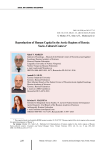
Reproduction of Human Capital in the Arctic Regions of Russia: Socio-Cultural Context
Статья научная
The formation and reproduction of human capital, as the most important prerequisite for modern development, has not only sectoral, but also regional features. The article, which continues a series of our works on human capital in the conditions of the Arctic zone of the Russian Federation, considers the influence of socio-cultural factors on human capital in the Arctic territories. The aim of the study is to present a new approach to the role of socio-cultural factors (foundations and components) in human capital development in the Arctic regions for a new (neo-industrial) stage of their exploration. In this regard, we clarify conceptual foundations of the studies on human capital presented in the works of researchers from Russia and other countries. Within a certain theoretical and methodological framework, we analyze, compare, and summarize the findings of a sociological study conducted in March – May 2018 in the Arkhangelsk Oblast (in the Arctic territories) and Yamalo-Nenets Autonomous Okrug; to this end, we use methods such as mass surveys and statistical data analysis. We provide data that characterize human capital of the Northerners in terms of their financial situation; we prove the existence of a direct dependence on regional (higher – in Yamalo-Nenets Autonomous Okrug), sectoral (especially oil and gas enterprises), socio-professional (especially managers, highly qualified specialists, state and municipal employees) aspects. With the use of multidimensional measurements, we show the interrelations and individual dependencies of the variables that characterize education, health and socio-professional status in the structure of human capital in the surveyed regions. We also focus our attention on the role of value orientations in the formation and reproduction of human capital. In conclusion, we note that the impact of socio-cultural factors on human capital is ambivalent: on the one hand, they act as a fundamental basis, on the other hand, some of them (education, work motivation, etc.) act as structural components. We propose measures aimed at strengthening national and regional policies (including investment) in the development of human capital in the Russian Arctic
Бесплатно
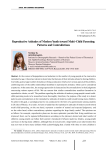
Reproductive attitudes of modern youth toward multi-child parenting: patterns and contradictions
Статья научная
In the context of depopulation and reduction in the number of young people at the most active reproductive age, it becomes relevant to determine the features of their attitudes related to having children. Currently, quite a large number of studies are being conducted, which cover various aspects of the problem, combining some of the stable relationships identified in reproductive attitudes, which can be considered as patterns. At the same time, the younger generation is characterized by contradictions in their judgments concerning various aspects of life. We can assume that similar contradictions manifest themselves in reproductive choice, as well. The problem regarding the attitudes of modern young people toward multichild parenting needs to be researched more thoroughly; therefore, the purpose of the study is to detect patterns and contradictions in the reproductive attitudes of modern youth toward having many children. To achieve this goal, a sociological survey was conducted in the form of a questionnaire among students in 20 cities of Russia. As a result, we have revealed that the reproductive attitudes of modern youth toward multi-child parenting, on the one hand, represent a number of natural and expected judgments, and on the other hand, reflect contradictory opinions regarding the large family model. The opinions are as follows: for example, reproductive plans can be more optimistic provided that living conditions are improved; there can be regional differentiation according to the planned, desired and ideal number of children; young people can follow their parents’ reproductive behavior patterns; besides, young people can focus on having many children, although they do not perceive a large family as an ideal model; they may not want to have many children while acknowledging that a family with three or more children is the most optimal one; it may also happen that young people want to have many children, but at the same time show an increasingly negative attitude toward other multi-child families. Thus, these contradictions can be considered as a kind of barrier that can restrain the implementation of young people’s reproductive plans; therefore, they should be leveled within the framework of socio-demographic policy.
Бесплатно
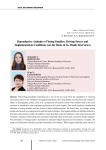
Статья научная
Promoting population reproduction is one of the key tasks from the standpoint of ensuring national security. In the conditions of aging motherhood, the young family becomes the most important object of demographic policy, since it is a prosperous two-parent family with children that is the main resource of quantitative and qualitative parameters of human capital. The article analyzes reproductive attitudes of young families and the drivers of their implementation. We reveal that, on average, young people are focused on creating a family and having few children. The registered failure to fulfill reproductive intentions (the desired number of children is more than their expected number) is due to the financial and economic situation of the family, the uncertainty (possible risks) of the future, and intra-family relations. The formation of young people's reproductive attitudes largely depends on their parents' example, the quality of child-parent relations and the immediate environment. With a high probability, those raised in a family with few children or those who have no siblings at all may not want to have many children or have children at all. As for children from medium and large families, they may have different views on having children. Reproductive attitudes are linked to marital ones. As a rule, the orientation toward a legitimate happy marriage is reinforced by the desire to have children. A variant of child-centered motives is observed in girls and manifested in the desire “to have a big family and many children”, which somewhat shifts the focus of the priority of intra-family relations. The importance of the housing issue and ensuring a decent standard of living for oneself and one's children is determined by the fact that the unresolved nature of these problems influences the intention to have the first child and reduces the chances of having a few and many children even if they are desirable. State support for young families is needed, despite differences in the estimates of its effectiveness. The difference lies in determining the most desirable mechanisms - it is either direct support in the form of allowances, benefits, etc., or the creation of conditions for raising children (affordable quality social infrastructure) and the possibility of decent earnings for parents. Today, a young family needs state support, and, undoubtedly, the needs of young families should be taken into account in the national demographic policy.
Бесплатно

Rural areas population’ migration factors in the European part of the Russian Arctic
Статья научная
The study of migration remains relevant, despite the presence of a wide range of papers by authors from Russia and other countries on the subject. The features of migration processes, in particular migration factors, in rural areas of the Arctic zone of the Russian Federation are of the greatest interest due to the current accumulation of sufficient amount of data for analysis. The article considers seven municipalities of the European part of the Russian Arctic and empirically determines statistically significant migration factors through correlation analysis. Data on 15 indicators were collected from 2008 to 2021. We reveal that the most significant migration factors are the development of education, the situation regarding transport links, food and financial security of the population, and housing provision. At the same time, the combination of statistically significant factors is unique for each individual municipal entity. The thesis, widespread in the migration theory, about the greater influence of economic factors on the dynamics of migration was only partially confirmed in the case of the rural areas under consideration. It was found that individual indicators, such as agricultural production and employment, generally do not affect migration decline (increase), and the established relationship with such an indicator as wage level cannot be interpreted unambiguously. With the growth of labor incomes, the outflow of rural residents from their native areas reduces, but does not disappear completely. In turn, the increase in nominal wages is to a large extent a reflection of the inflationary effect; therefore, it cannot be an effective mechanism for retaining the rural population.
Бесплатно

Satisfaction with the work-life balance: working women's view (regional aspect)
Статья научная
One of the employee’s objective needs is an appropriate balance between work and private life. The article presents a comparative study of satisfaction with the work-life balance among working women with and without children. Based on the materials of a questionnaire survey of the Vologda Oblast workingage population, conducted in 2018, we investigate the features of perception of the following aspects of work and family life: satisfaction with the ability to combine work and family responsibilities, the impact of work on various aspects of daily life, the ability to organize recreation, the presence of problems related to one’s close environment, qualitative characteristics of work. We have revealed that working women with and without children have predominant positive or neutral impact of work on daily life, and there are no significant differences in the number of working days per month and the actual length of the working day. We have found that women without children often perform extra work, are less able to organize their leisure time, and are harsher in relation to their close environment. However, there are no significant differences in satisfaction with the work-life balance among women with and without children. The paper determines that working women (regardless of parental status) who satisfactorily assess the ability to combine work and family responsibilities are characterized by better indicators of labor activity (fewer delays and disruptions in work, less failure to fulfill plans, etc.), a higher level of realization of physical, personal and professional abilities in work. The similarity of the subjective perception of the work-life balance among working women with and without children may indicate women’s high adaptability to multitasking and time allocation. We highlight the importance of improving the policy on family and employment, in particular in terms of developing flexible employment formats.
Бесплатно

Статья научная
The article provides a conceptual understanding of the semantic space of reality, substantiates its structure and features of its formation in the youth environment. To this end, we consider the process of meaning formation and the content of semantic fields. It is analyzed as the basis for self-regulation of social interactions between young people. Identifying semantic foundations of self-regulation is a relevant research task for both theory and practice. The aim of the study is to identify the structure of relationships and hierarchical clustering of basic elements in the mechanism for self-regulation of social interactions in the youth environment with the help of the structural and taxonomic model. The model was constructed within the framework of the tool for self-regulation of young people's daily life; the tool is being developed at the Center for Youth Sociology, Institute of Socio-Political Research, Federal Center of Theoretical and Applied Sociology of the Russian Academy of Sciences (ISPR FCTAS RAS). The structural and taxonomic approach allows us to obtain structural-taxonomic maps that display multi-layered structures of relationships within the mechanism of self-regulation, as well as connections between different meanings that are reproduced and constructed in the youth environment in the process of everyday interactions. In contrast to the automatic classification as the classical task of taxonomy, the structural and taxonomic approach focuses on identifying the structure of the most significant relationships between the objects being classified; such objects (which are considered in the present paper) are the elements of self-regulation mechanism in the life of young people. We design a structural and taxonomic model using the data of a sociological survey; this allows us to offer reasonable descriptions and explanatory interpretations of the results. The analysis is based on the findings of empirical studies we obtained in the course of a survey of Russian youth 15-29 years of age. We use taxonomic analysis to reveal the structure of the semantic space of young people. We conclude that semantic connections within and between semantic fields are ambiguous. Having implemented structural and taxonomic modeling of the semantic space, we identify several levels of semantic fields. Their analysis allows us to form an idea of the semantic foundations of self-regulation of young people's interactions with each other and with society.
Бесплатно

